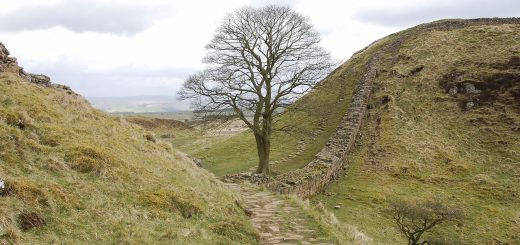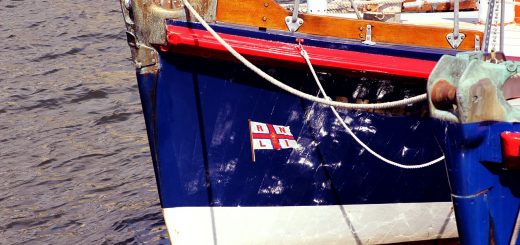Pembrokeshire in Historic Maps
We have come to know David Gardner as a wildlife photographer and writer of some merit. We also know he has an eye for antiquities, but somehow we had missed that he is an avid collector and somewhat of an authority on maps. The following is a brief synopsis of a talk he gave recently at the Ship Inn, Trefin, to the Croesgoch Heritage Group…

Humphrey Lhuyd’s Cambria Typus – the first map of Wales of 1573
Historically, maps have served a number of functions from attempting to make sense of the world to identifying ownership and boundaries and aiding travel over land and sea. Mapmaking as we know it started in earnest in the 16th century with the production of the first atlases by Ortelius and Saxton. Expensive to produce in terms of time, labour and materials, these were only available to the rich. In addition, the skills and equipment for accurate surveying were constantly needing to be improved, resulting in variable accuracy of detail in the resulting maps.
Humphrey Lhuyd’s Cambria Typus of 1573 was the first map of Wales ever published and is immediately recognisable by the misaligned Lleyn and Pembrokeshire peninsulas.
Saxton’s atlas of England and Wales of 1579 provided a much more accurate depiction of Pembrokeshire and was the first atlas to include maps of individual counties. Individual county maps were subsequently published in Camden’s Britannia in 1607 and then in John Speed’s larger and more ambitious Theatre of the Empire of Great Britain, the maps of which were beautifully decorated with heraldic shields and plans of the principal towns. Dutch cartographers Johannes and Joan Blaeu and Jan Jansson also produced large and beautiful atlases containing decorative county maps in 1645 and 1646 respectively. The copper plates from which the maps were printed were often used repeatedly and modified to produce new editions over subsequent years.

Ogilby’s road map – St Davids to Talybont, 1675, produced for stagecoach drivers
Road maps, particularly by Ogilby, were produced in the late 17th and early 18th centuries to aid stage coach drivers, and Captain Greenville Thomas and William Morris produced sea charts of the Welsh coast in 1693 and 1737 respectively, an endeavour that must have saved thousands of sailors’ lives.
A number of cheaper and smaller atlases and collections of maps were produced for the less well off to purchase including examples by Van den Keere, Blaeu, John Bill, Owen and Bowen, and Morden, all with varying degrees of detail and accuracy. It was not until the early 19th century, with the development of improved surveying techniques and the introduction of engraving on steel plates, that decorative qualities were taken over by highly accurate and detailed, more functional maps available to the masses.

Speed map of Pembrokeshire, Overton edition, 1713, showing the boundaries of the hundreds
The close inspection of antique maps can provide a fascinating insight into the life of bygone times. If anyone is interested in having a look at or buying examples in David’s extensive collection, he can be contacted at David4Rugs@aol.com.




















